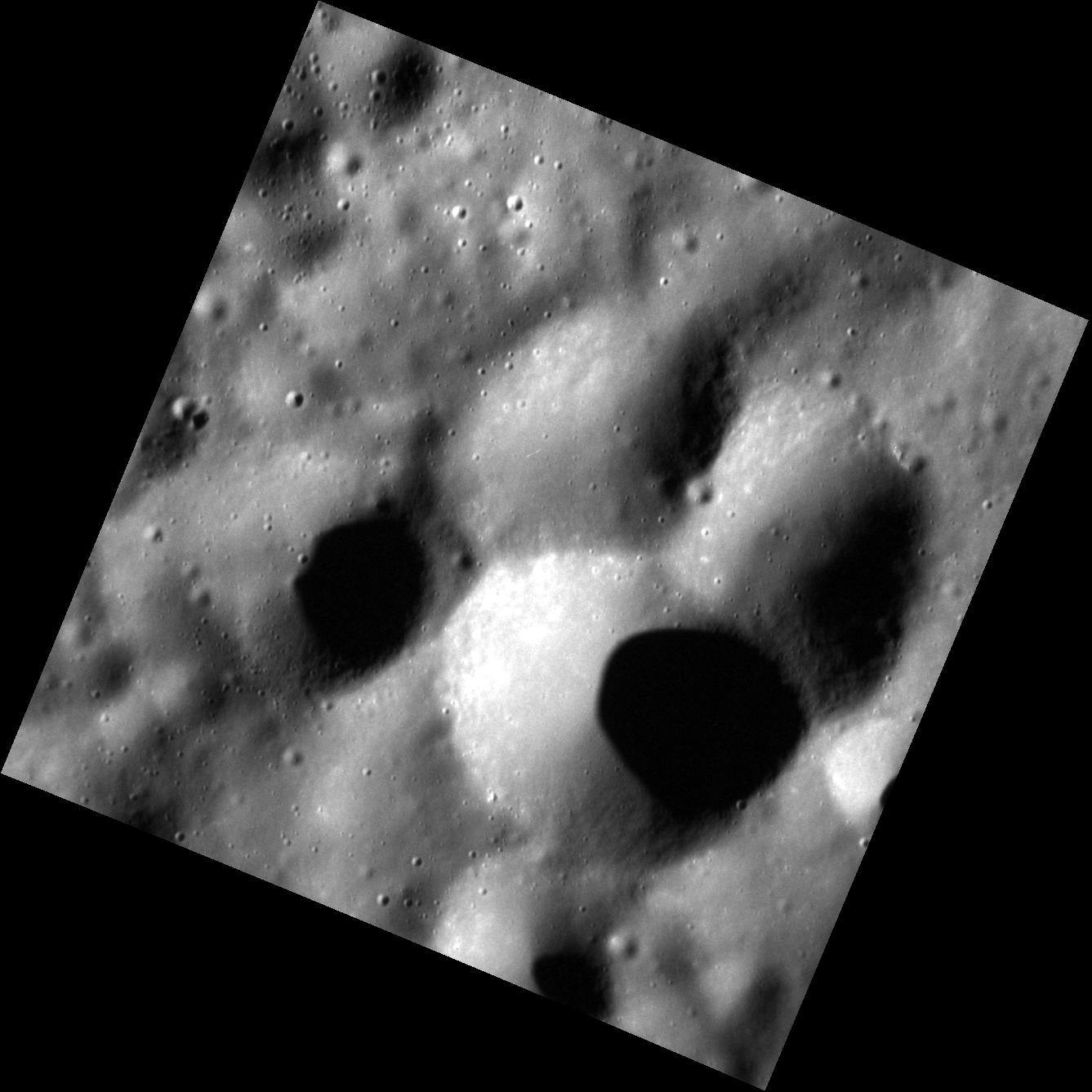We have seen the ejecta deposit of the Raditladi basin before, but not at this resolution. Here, the smooth patches of surface are solidified ponds of impact melt, rock liquefied by the tremendous heat of the impact explosion that formed Raditladi. The rougher, higher-standing terrain is either solid ejecta deposited around the impact site, or part of the original surface that predates the basin's formation.
Date acquired: November 19, 2012
Image Mission Elapsed Time (MET): 261770877
Image ID: 2981602
Instrument: Narrow Angle Camera (NAC) of the Mercury Dual Imaging System (MDIS)
Center Latitude: 29.06°
Center Longitude: 115.13° E
Resolution: 27 meters/pixel
Scale: The field of view is ~25 km (16 mi.) from top to bottom
Incidence Angle: 68.0°
Emission Angle: 27.4°
Phase Angle: 95.4°
North is to the bottom of this image.
Photo credit: NASA/Johns Hopkins University Applied Physics Laboratory/Carnegie Institution of Washington


















